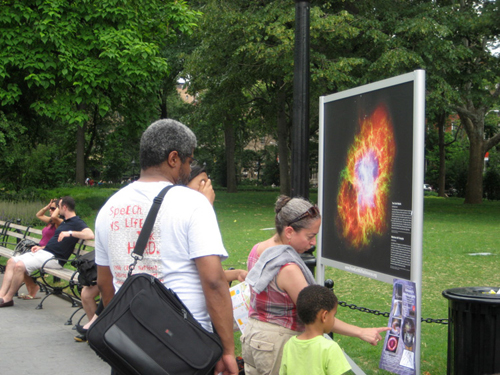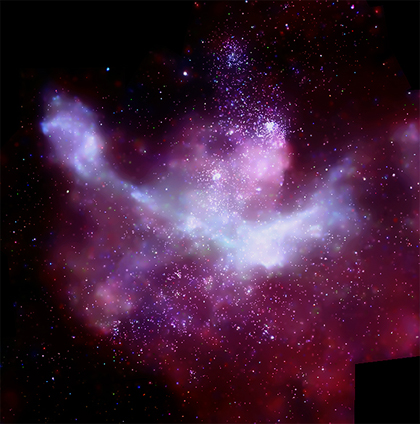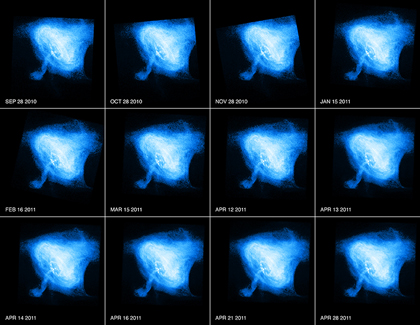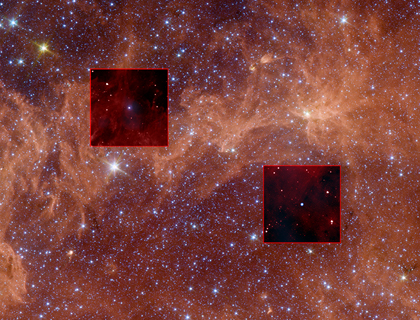The AAS Comes to Boston
This week, the American Astronomical Society held its bi-annual meeting in the fair city of Boston. Since those of us involved with Chandra spend most of our time on the other side of the river (meaning Cambridge), this is a chance to expand our horizons ever so slightly.
Of course, the big bonus of the AAS meeting is the ability to hear talks and mingle with people who don’t work at our institution. It’s a chance to catch up with old colleagues and meet new ones. In a world increasingly dominating by electronic communication, there’s something irreplaceable about actually sitting across from someone in person.
Nearby Supernova Factory Ramps Up
This large Chandra image shows the Carina Nebula, a star-forming region in the Sagittarius-Carina arm of the Milky Way a mere 7,500 light years from Earth. Chandra's sharp X-ray vision has detected over 14,000 stars in this region, revealed a diffuse X-ray glow, and provided strong evidence that massive stars have already self-destructed in this nearby supernova factory.
Chandra: Promises Made and Kept
A promise made is a debt unpaid. Robert Service
Chance favors the prepared mind. Louis Pasteur
Not long ago a request came down from above for a list of Chandra’s achievements that have “completely transformed the way we have viewed our world, solar system, sun, or universe."
In other words, how many discoveries of the century have you made this year?
The Crab in Action & The Case of The Dog That Did Not Bark
A new movie from NASA's Chandra X-ray Observatory shows a sequence of Chandra images of the Crab Nebula, taken over an interval of seven months. Dramatic variations are seen, including the expansion of a ring of X-ray emission around the pulsar (white dot near center) and changes in the knots within this ring.
From Science Olympiad to Scientist: Jeffrey Silverman
As part of our efforts to work with the formal education community (that is, generally K-12 schools), the Chandra EPO team works with the National Science Olympiad. The Olympiad is an excellent science competition that involves middle and high school teams from all 50 states, often getting kids involved at an even earlier age.
Jeffrey Silverman was part of the very successful Science Olympiad team from Troy High School (Fullerton, CA) team in 2001. He is now finishing his Ph.D. in astrophysics from the University of California at Berkeley, where he works mainly on exploding stars known as supernovas including 2006gy and this recent news-grabbing event. We asked Jeffrey to share with us some of his experiences during the Science Olympiad and how they helped shape his choices once he got to college and now into graduate school and beyond.
NASA'S Chandra Finds New Evidence on Origin of Supernovas
This Chandra image of the Tycho supernova remnant contains new evidence for what triggered the original supernova explosion. Tycho was formed by a Type Ia supernova, a category of stellar explosion used in measuring astronomical distances because of their reliable brightness. In the lower left region of Tycho is a blue arc of X-ray emission. Several lines of evidence support the conclusion that this arc is due to a shock wave created when a white dwarf exploded and blew material off the surface of a nearby companion star.
"From Earth to the Solar System Lifts" Off
We are very excited to announce the launch of a new – and yet somewhat familiar -- project. Today, “From Earth to the Solar System” officially opens. As the name implies, FETTSS (our new favorite acronym) is a direct descendent of the “From Earth to the Universe” project.
Hunting for the Milky Way's Heaviest Stars
Like looking for Easter eggs in a lawn of long grass, the hunt for the Milky Way's most massive stars takes persistence and sharp eyes. In their stellar search through our Galactic backyard, astronomers have used powerful telescopes sensitive to X-ray and infrared radiation to find evidence for a substantial population of X-ray emitting massive stars.






